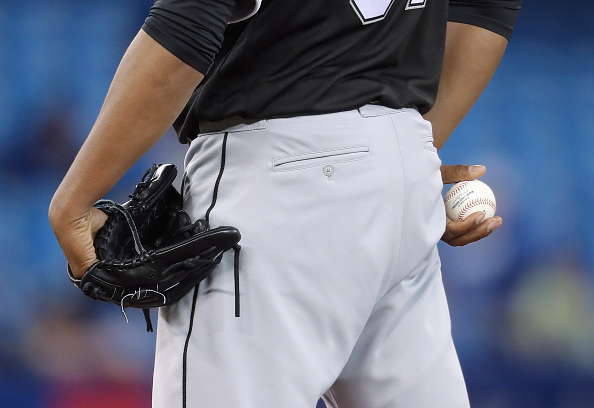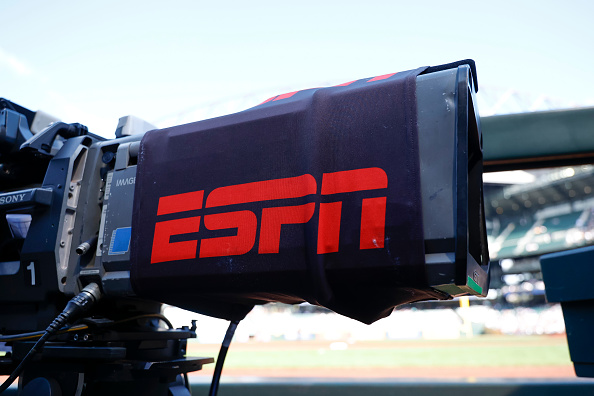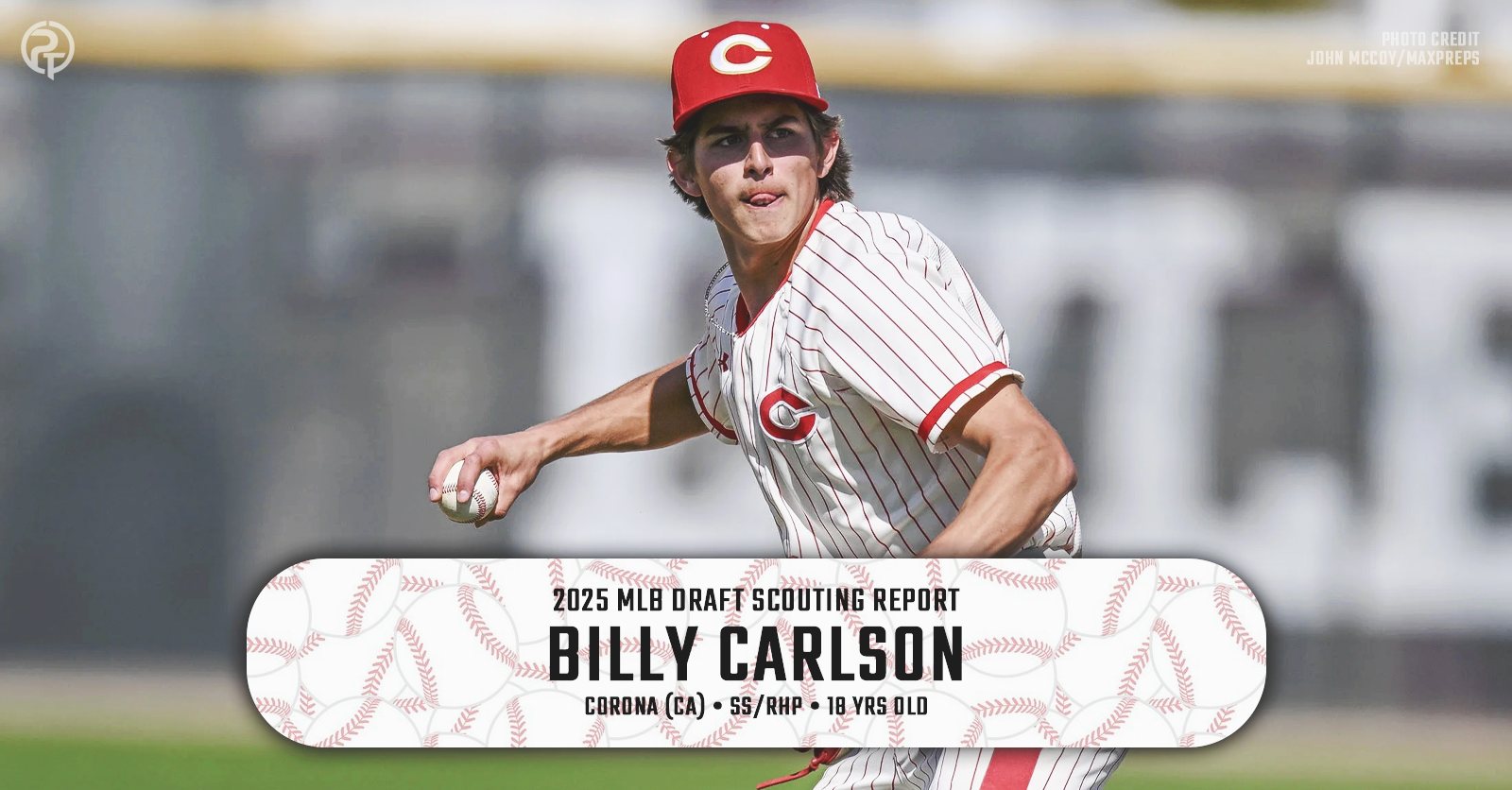In Part 2, we built upon how pitching strategy has changed while utilizing analysis of each zone to fully grasp that metamorphosis. We tackled the issues of Maddux-style pitching during the launch-angle era and attempted to explain why some teams broke out in 2023. We finished by explaining how the sinker epitomizes the movement of today’s game back to pitching horizontally.
In Part 3, we will try to tie everything together from a hitting vs. pitching perspective, zone analyses, and sabermetrics vs. the “eye” test.
CHAPTER V: Introducing the Sweeper
Due to a labeling issue with pitches, some are named based on grip while others by movement. Nowadays, many people fall for a misnomer that considers the sweeper as its own entity. In reality, it’s just one of three sliders that can be thrown. The others are the hard slider and the two-plane slider. Each has a slightly different grip, as well as vastly different velocities and trajectories.
The hard slider is generally thrown anywhere from the high 80s to the low 90s and has almost no vertical break; this is considered 3-9 movement (3 o’clock to 9 o’clock on a clock for right-handed pitchers). While the hard slider has always existed in baseball, its renaissance came during the early stages of the launch-angle era as well as the velocity spike that occurred in the early 2010s. Dan Warthen is credited with teaching the Mets’ fireballing staff of Matt Harvey, Jacob deGrom, Zack Wheeler, Noah Syndergaard, and Steven Matz an alternative slider grip that decreased its movement, increased its velocity, and made it easier to command. This soon became the bread-and-butter offering of all pitchers armed with a mid-to-high-90s mph fastball.
It’s important to note that a slider can be thrown by both manipulating your fingers on a ball and by changing the angle of your hand upon release. For example, the fastball is thrown by keeping your hand and wrist straight, parallel to second base, and a curveball is thrown using a football grip, with the back of your hand facing third base, if you are right-handed. The slider is released with your wrist and hand anywhere in the middle of a curveball’s and fastball’s release angles.
John Smoltz and many others threw their sliders using the same grip as their four-seam fastball while angling their hand and wrist at about a 45-degree angle. That being said, a slider (specifically the Warthen version) can also be thrown with a different grip but at a similar directionality of the hand and wrist as a fastball. In this case, the grip is what provides the pitch with its distinct cutting, one-plane horizontal movement.
The cutter, hard slider, and poorly named “slutter” all refer to different types of sliders that have similar movement. All are only a few mph slower than a straight, four-seam, fastball and all have more horizontal break than vertical break. While I cannot fully explain the divergences in their names, confusion and overlap between these pitches stem from a very general definition of a slider that emphasizes the pitch’s movement and not its grip.
The classic slider, which Smoltz threw, is generally thrown eight to 11 mph slower than a fastball and has true two-plane break. The sweeper, like the cutter and hard slider, can be achieved by manipulating your finger placement or your wrist while releasing the pitch. This pitch almost completely disappeared during the launch-angle era for reasons that are hard to pinpoint, yet can be theorized that it was a very poor match for launch-era swings. The sweeper has existed for a long time, too, and was famously utilized by Adam Ottavino during the height of the launch-angle era with great success.
The sweeper is the slowest of all slider variations and has the most break. Its trajectory is almost always in the range of 10-4 and 11-5 on a clock and is categorized by a slow yet voracious break. The categorization of the sweeper as a different pitch than the slider, as well as the larger-scale adoption of it, transpiring during the dawn of an era moving away from vertical pitching, makes a lot of sense. Just as the hard slider movement came about during the early stages of the launch-angle era by Warthen and the Mets’ staff, the sweeper is coming back in full force now that the game is moving horizontally once again.
The sweeper, like pitching horizontally in general, plays off of what is and isn’t a strike at the horizontal extremes of the strike zone. The hard slider, like pitching vertically, does the same thing with the vertical extremes. With each style having different repertoires that fit it better, I contend that the real difference between them is embedded in their intentions. Pitching horizontally is intended to stay in the strike zone, miss barrels, and induce weak contact, whereas pitching vertically is intended to strike batters out by getting them to swing at balls outside of the strike zone.
CHAPTER VI: Back to DIPS
Unforeseen and fascinating, the unintended consequences of Voros McCracken’s ingenious development of DIPS had little to do with the game itself and much to do with the on-field product and viewer experience. The evolution of DIPS’ acceptance into the Major Leagues evolved into a game of hunting for strikeouts. This led to deeper counts and more pitches thrown, which then led to heavier bullpen usage, slower games, shorter outings, and more stressful situations.
More pitches being thrown is one obvious area of stress for a pitcher. As pitchers incessantly hunted the strikeout, they attempted to make hitters fish outside of the zone. The diligent hitters did not chase those pitches; this extended at-bats and also increased the number of pitches thrown. More strikeouts also meant deeper counts intrinsically, as all strikeouts dictate that at least three pitches be thrown (at least until 2023) and almost always require more than that.
An argument can also be made for long plate appearances being more stressful, especially when the goal is to record a strikeout. Stress, as measured by Rany Jazayerli, formerly of Baseball Prospectus, was extrapolated as a factor of the difficulty of a given situation in a game, as well as the number of pitches thrown. More baserunners, later innings, and high pitch counts are among the factors contributing to more stressful outings. Jazayerli was able to find a correlation, not only of throwing many pitches but also of throwing pitches in stressful situations, to injury and erosion of talent.

Piggybacking on Jazayerli’s groundbreaking find, I’d like to posit that stress is also a byproduct of incessant strikeouts. A distinct trend emerged where hitters laid off first pitches and pitchers used their breaking and offspeed stuff at an alarming rate to get ahead in the count. This, too, led to longer plate appearances, more pitches thrown, and shorter outings for pitchers. With pitchers endeavoring to record the strikeout, hitters were subject to seeing many pitches in each plate appearance.
Easy outs are the least stressful variety of outs for pitchers. The fact that relief pitching and bullpens have taken over the game is not so mysterious considering how difficult it is to try to strike every hitter out. Severely hampering a pitcher’s capabilities has dire consequences once that pitcher tires. A pitcher attempting to record strikeouts and therefore using his breaking and offspeed pitches more frequently can eventually lead to higher chances of hanging pitches, especially once tired. This also leads to harder contact and more home runs surrendered later in the outing.
CHAPTER VII: Drawing Conclusions
This leads us back to a curiosity that came about due to sabermetrics and could be seen as a central theme of this series: why strikeouts are very important to pitchers, yet avoiding them is not particularly pivotal to a hitter’s ability. The reason for this is directly tied to the two modes of pitching, either “vertically” or “horizontally.” The fact that DIPS theory carried verisimilitude through both ages and the dawning of this new age shows how fundamental the strikeout is to pitching. Yet, with regards to hitting, there are seemingly more factors involved that are even more fundamental.
Specifically, the three zones we covered in this series, the strike zone, the “contact” zone, and the “power” zone are all areas in which a hitter can excel. A hitter can be good by having a discerning eye and therefore walking a lot; this hitter’s excellence manifests in his superb understanding of the strike zone. Some hitters have superior contact skills and therefore minimize their strikeouts while putting the ball in play at an elite level; these hitters have very large “contact” zones.
This doesn’t mean that strikeouts are or are not important to hitters. Rather, it simply isn’t a very useful barometer for fully encapsulating a hitter’s abilities. Hitters can be very successful even if they strike out a lot, yet hitting itself is a skill in which making contact and therefore avoiding striking out is important.
This dialectic may be hard to grasp, but how hitters have proven successful in a myriad of ways sets them apart from pitchers who must be able to strike hitters out and avoid walks or home runs. This is what Voros McCracken taught us: while pitching vacillates between different styles, it never diverges from its dependence on the three true outcomes of walks, strikeouts, and home runs. Hitting, however, has eluded total encapsulation via sabermetrics. Its multifaceted properties have escaped an analytical dictum akin to DIPS.
As this concludes the three-part series on pitching, be on the lookout for a bonus article in which I’ll explain why hitting provides a deep-seated challenge to analytics and sabermetrics — how after almost two decades of widespread adoption of sabermetrics throughout baseball, teams are utilizing and preaching scouting and coaching methodologies when analyzing and assessing hitters.
Main Image Credit:







